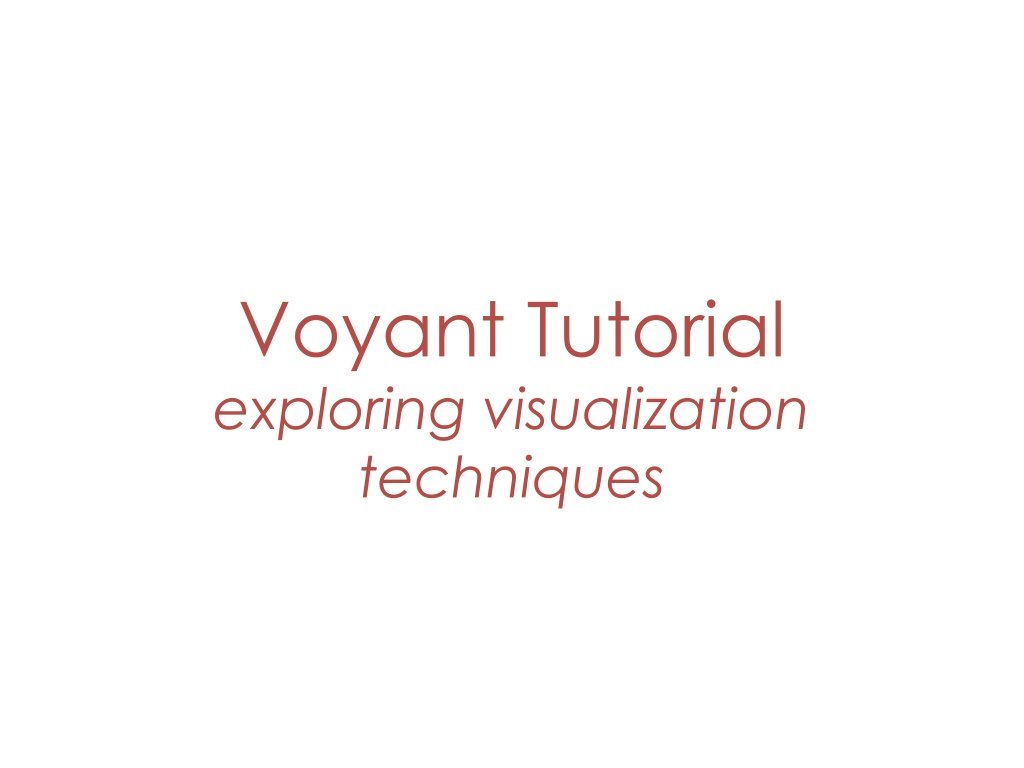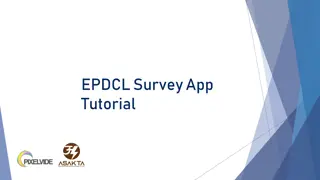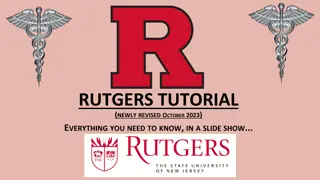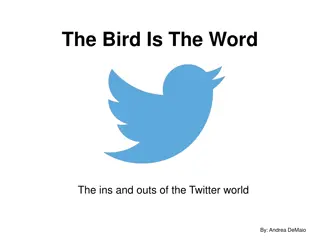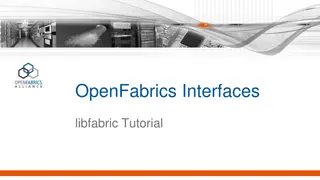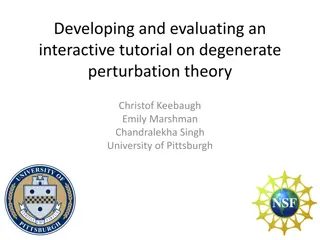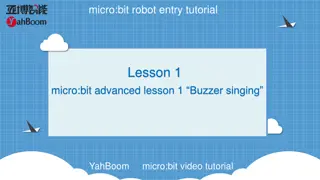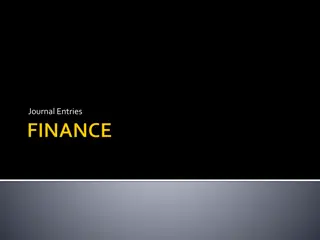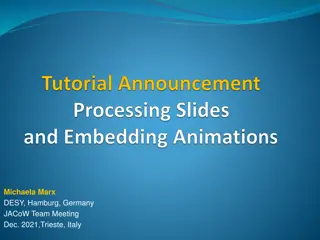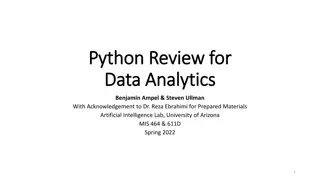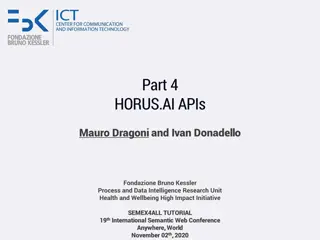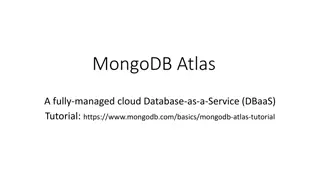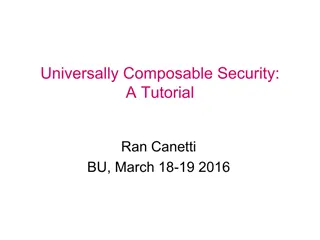Voyant Tutorial
Most-Frequent-Word Analysis, or MFW, is a text analysis technique that treats texts as collections of individual words, disregarding grammar and sentence structure. This method is valuable for creating vocabularies, aiding in language learning, identifying thematic elements in texts, and visualizing word lists using modern digital humanities tools.
Download Presentation

Please find below an Image/Link to download the presentation.
The content on the website is provided AS IS for your information and personal use only. It may not be sold, licensed, or shared on other websites without obtaining consent from the author.If you encounter any issues during the download, it is possible that the publisher has removed the file from their server.
You are allowed to download the files provided on this website for personal or commercial use, subject to the condition that they are used lawfully. All files are the property of their respective owners.
The content on the website is provided AS IS for your information and personal use only. It may not be sold, licensed, or shared on other websites without obtaining consent from the author.
E N D
Presentation Transcript
Voyant Tutorial exploring visualization techniques
Voyant Tutorial exploring visualization techniques Credit: Battershill, Claire, and Shawna Ross. Chapter 18 Classroom Activity Sets. Using Digital Humanities in the Classroom: Digital Humanities in the Classroom: A Practical Introduction. Book Companion. 2017. http://teachdh.com
Today, we will learn about most-frequent word analysis. Part 1: Background Information Part 2: Instruction Set Part 3: Advanced Options
Part 1 Background Information
Most-Frequent-Word (MFS) Analysis Treats texts as bags of words Grammar and sentence structure are not important Separates texts into individual words ( tokens ) Words too frequent to be significant are taken out Called stopwords, such as am, is, was, were, he, she, we, it Counts up how many times each word occurs Creates a list of most- to least-frequently used words, remembering how many times each word occurs
Uses of MFW Analysis Create vocabularies to help learning a new language Find each and every occurrence word in a text quickly You may know this practice by the term concordance, as biblical concordances are popular Discover hidden themes in a text or stylistic choices by an author
Digital MFW Analysis Recent resurgence in interest in MFW because of the growth of the digital humanities New techniques to visualize word lists Word clouds are very popular today
Voyant Tools is a web-based text reading and analysis environment. It is a scholarly project that is designed to facilitate reading and interpretive practices for digital humanities students and scholars as well as for the general public. St fan Sinclair and Geoffrey Rockwell http://voyant-tools.org/docs/#!/guide/about
Part 2 Instruction Set
At a Glance Access your text Load it onto Voyant Explore visualizations Interpret your text
Access your text find a copy of the text that you can give to Voyant
Finding a reliable text It should be clean, that is, as free of errors as possible! Use the same standards and processes as you use in scholarly research or teaching Versions hosted by educational institutions or located in databases are some of the best options
Lets search for the 1889 Meiji Constitution of Japan this .edu file looks good
Now that we have found our text, we need to know how to upload it onto Voyant.
Now that we have our text,let s go to voyant- tools.org
For todays workshop, Let s copy and paste the corpus into the text box.
When you copy and paste a text, check to see if you can delete the parts that you know were not a part of the original! (It s useful to check the beginning and the end)
If your text is long or your file is big, you may have to wait
Word Cloud Original Text Frequency of words as the text progresses Every place a particular word is found in the text List of MFW
Click Terms at the top left of your screen to browse the MFW list.
I browse the list and want to see subjects and emperor, so I check the boxes. Look at what happened at the right side of the screen.
I want to know more about where emperor occurs, so on the bottom right of the screen, in the Contexts box, I type in emperor. Now I can see the sentences where emperor appears.
If I click any line in the Contexts box, the Reader box in the top middle will take me straight to that part, so I can read the text!
Lets say I dont see anything interesting in one of the boxes. Hover over the blank horizontal bar at the top of the box, and click the window icon for more options.
Bubbles (In Document Tools) shows an animated list showing which words appear at different parts!
What do these results tell us about our text? In Cirrus, the word cloud, what did you see about the importance of certain terms? Why are some terms more important than others? Did you expect certain words to be bigger or smaller? In the Trends box, did you see interesting relationships between two or more terms? What was your favorite Voyant window or tool? Why? What did it tell you about the text?
Part 3 Advanced Options
Some advanced options Searching more carefully Saving your results Embedding in a larger project Thinking reflexively
Searching more carefully
Know exactly what word you re searching for http://voyant- tools.org/docs/#!/guide/search
See something you like? Hover over the top bar and click the box with an arrow coming out.
Which option? Export View This is for citation purposes. You can either copy the HTML snippet to be able to embed the whole project in a website, or you can get a citation (bibliographic reference) that will let you cite your work in a research paper. Export Current Data This is for advanced users who want to save the data as a set or subset. Export Visualization If you only want that one tiny window (the single image that is right below the window icon you clicked) Will allow you to download your image (probably want you want!)
Embedding in a larger project When you are reading a text for homework, you could consult Voyant to help you understand the text s primary themes. You can also use Voyant to find trends in an author s style, especially if you compare results from other authors or from other texts written by another author. Supplement Voyant results with traditional research from scholarly sources such as subject encyclopedia, scholarly monographs, and academic journals.
Thinking reflexively What did you not like about Voyant? What questions can Voyant not answer? Is this a problem of Voyant, or of any Most Frequent Word analysis? How does counting help us read texts distantly? Do you prefer close reading, and if so, why? When would you use Voyant in the future?
